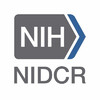
Functional Electrical Stimulation (FES) Cycling for Children With Spinal Cord Injuries (SCI)
Spinal Cord InjuryThe overall objective of this research project is to examine the clinical efficacy of lower extremity cycling with functional electrical stimulation to improve the health and fitness of children with spinal cord injuries (SCI). To achieve this goal, a controlled, randomized study will be conducted with thirty children who have sustained a spinal cord injury. The children in the study will be assigned to one of three groups: those receiving functional electrical stimulation (FES) leg cycling exercise, those receiving passive leg cycling, and a non-cycling control group receiving electrical stimulation therapy to generate muscle contractions in the lower extremity. All three groups will be balanced as to the amount of time they receive the specific therapy. All therapies, after initial assessment, will be conducted at home in order to foster changes in lifestyle that may prove to be essential for improved quality of life. The specific aims of this proposal are delineated below: Aim 1: To assess, by means of a randomized controlled study design, the ability of FES cycling to improve the cardiovascular and musculoskeletal systems of ten children with a spinal cord injury, as compared to ten children undergoing passive leg cycling exercise and ten children receiving electrical stimulation therapy alone. Aim 2: To determine, by means of a randomized controlled study design, the feasibility of using FES leg cycling exercise to provide long-term health benefits and improve the neurologic status of ten children with a spinal cord injury, as compared to ten children undergoing passive leg cycling exercise and ten children receiving electrical stimulation therapy alone.

Platelets for Acute Wound Healing
WoundsThis study will examine whether platelet gel positively affects wound healing. Platelet gel will be used to treat punch biopsy wounds and the results will be compared to results from wounds treated with a control treatment.

Effects of Topical SLPI on Skin Wounds
HealthyWound HealingThis study will evaluate the effects of a protein called secretory leukocyte protease inhibitor (SLPI), on skin wound healing. Produced naturally by the body, SLPI modifies levels of elastase, a substance that breaks down the skin. Older people are at greater risk of impaired wound healing, with increased elastase activity and inflammation. In addition, men heal more slowly than women. Delayed healing is associated with infection and pain and can lead to the development of chronic non-healing skin wounds. Healthy men and women between 60 and 80 years old who wish to participate in this study will have a brief history and physical evaluation to determine their eligibility. Those enrolled will be randomly assigned to receive a gel form of SLPI applied topically (on the skin surface) to a skin wound or a placebo (a look-alike gel with no active ingredient). Participants will undergo the following procedures: First visit - The skin will be numbed with a local anesthetic and two small (4 mm) wounds (about the size of a pencil eraser) made in each upper arm. The drug or placebo will be applied to the wound and gauze placed over it. Two blood samples (20 ml and 7 ml) will be drawn an hour apart to determine blood levels of SLPI. Second visit - The day after the first visit, the wound dressing will be removed and the participant will be evaluated for pain at the wound site, allergic reactions or infection. A blood sample (7 ml) will be taken. Third visit - The wounds will be examined and photographed to evaluate healing. In addition, the strength of the wound may be assessed by means of a vacuum system placed on the skin. (This may cause a tingling sensation over the wound.) A piece of all four wounds will be removed after the skin has been numbed and a dressing applied. Fourth visit - The wounds will be examined for healing and the dressing removed.

Colchicine for Reduction of Periprocedural Myocardial Injury in Percutaneous Coronary Intervention...
Periprocedural Myocardial InfarctionPeriprocedural Myocardial InjuryStudy of role of colchicine in reducing periprocedural myocardial injury in patients prepared for elective PCI and its role in reduction of MACEs.

Consol Time and Acute Kidney Injury in Robotic-assisted Prostatectomy
Acute Kidney InjuryHemodynamic InstabilityRobotic-assisted laparoscopic prostatectomy (RALP) is the gold standard surgical technique in prostate surgery. Many Robotic-laparoscopic surgical techniques also require the intraoperative deep Trendelenburg position and intravenous fluid restriction during surgery. However, the possible side effects of the deep Trendelenburg's position and the fluid restriction on the cardiovascular and renal systems during surgery are unknown. Although the Trendelenburg position is a life-saving maneuver in hypovolemic patients, it also carries undesirable risks. Long console time may contribute to the development of acute kidney injury (AKI) by prolonging the Trendelenburg time and the fluid-restricted time. In this study, investigators aimed to demonstrate the effect of console time on the development of AKI. Investigators also aimed to determine the hemodynamic risk factors that cause the development of AKI in patients monitored with the pressure Recording Analytical Method (PRAM).

Study of the Concordance of the Measurements Between the Evaluation of the Area of a Wound by the...
Wound HealingThe goal of this clinical trial is to compare the evaluation of a wound area and wound tissue content made by different methods on patient population with need for directed wound healing. The main question test of the concordance of the measurements between the evaluation of the area of a wound by the technique of transparent (Gold standard) compared to the evaluation of the area by the algorithm of a decision support system (WoundSize) Patient wounds will be examined: by eye by the principal investigator using a ruler by the principal investigator by WoundCare algorithms (AKA WoundTrack) using smartphone photography by the principal investigator tracing the outline of the wound using a transparent sheet by the principal investigator by eye by a second investigator using a ruler by a second investigator by WoundCare (AKA WoundTrack) algorithms using smartphone photography by a second investigator. tracing the outline of the wound using a transparent sheet by the second investigator

Longitudinal Assessment of Post-concussion Driving in Young Adults
Brain InjuriesTraumatic3 moreUpwards of 3.8 million concussions occur annually in the United States. Driving is a highly complicated activity that requires visual, motor, and cognitive skills, which are commonly impaired after concussion. Yet, the time course of post-concussion driving impairment has not been characterized. There is a critical need to 1) determine when concussed individuals should return to driving and 2) identify the key concussion assessment predictors of readiness to return to driving. In the absence of formal recommendations, impaired concussed drivers are at risk to themselves and others on the road. The first specific aim is to compare simulated driving between concussed individuals and non-concussed yoked matched controls across five longitudinal timepoints (pre-injury baseline, day 2, day 4, asymptomatic, and unrestricted medical clearance) and daily naturalistic driving from day 2 to day 9. Driving recommendations must be appropriate and necessitated by concussion impairments, since excessively strict recommendations wrongfully strip concussed patients of their independence and may dissuade individuals from seeking medical care. The second specific aim is to identify widely used concussion assessment outcomes that predict simulated driving performance among concussed individuals throughout concussion recovery. To address these aims, 100 concussed and 100 yoked matched control young adult college athletes will complete a simulated driving assessment and a robust concussion assessment battery at pre-injury baseline, day 2, day 4, asymptomatic, and unrestricted medical clearance. Naturalistic driving (measured with in-car global positioning systems) will be captured from day 2 to day 9 (7 days total). This study will determine the acute and subacute time course of post-concussion driving impairment and determine key predictors of post-concussion driving performance. Results from this innovative approach will have a broad and positive impact that will improve the safety of both concussed individuals and the general population, guide the practices of health professionals, inform the future work of researchers, and substantiate the work of policy-makers by providing evidence-based recommendations for managing post-concussion driving.

Is Aminophylline More Effective Than Neostigmine/Atropine Mixture in the Treatment of Post-dural...
Post-Dural Puncture HeadacheObjectives: To compare the safety and efficacy of IV aminophylline versus IV neostigmine/atropine mixture in the treatment of post-dural puncture headache (PDPH). Background: PDPH is the most frequent complication of procedures associated with dural puncture for spinal anesthesia or following accidental dural puncture during epidural anesthesia. Since invasive treatments have known complications, pharmacologic management may be preferable. Patients and Methods: This was a prospective, randomized, double-blind, phase four clinical trial; carried out on 60 patients presented with PDPH at our hospital. Patients were randomly allocated into two equal groups (30 patients each); group A, received IV aminophylline, and group NA, received IV neostigmine/atropine mixture.

Procellera® Compared to Standard of Care Treatment in Mitigating Biofilm Formation in Acute Trauma...
Trauma-related WoundBurn1 moreThe objective of the study is to evaluate Procellera® , a novel FDA approved antimicrobial wound dressing in a prospective, randomized, controlled clinical study. The hypothesis is that when the dressing is moistened, the low electric field created by moisture-activated elemental silver and zinc electro-couple will prevent formation of biofilm in wounds or to disrupt existing biofilm.

Treatment of Patients With Non-healing Wounds and Trophic Ulcers Using Autologous Dermal Fibroblasts...
Trophic UlcerNon-healing Wound1 moreTreatment of patients with non-healing wounds and trophic ulcers using local LED phototherapy with local transplantation of autologous dermal fibroblasts
